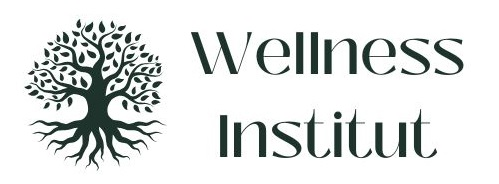Wellness Success Stories
Wellness Success Stories: Inspiring Transformation and Growth
Wellness Success Stories are personal accounts that highlight the transformative power of wellness practices in individuals’ lives. These stories share real-life experiences of people who have undergone significant changes in their physical, mental, emotional, and spiritual well-being by embracing various wellness approaches. Whether it’s through mindfulness, physical movement, nutrition, counseling, or holistic therapies, these stories offer insight into how people have faced and overcome challenges, improved their health, and transformed their lives.
Wellness Success Stories are powerful because they provide relatable examples of resilience, perseverance, and growth. They demonstrate that change is possible, and they inspire others to embark on their own wellness journeys. These stories show that wellness is not a one-size-fits-all approach; instead, it’s a personalized journey that can be tailored to each individual’s needs and goals.
By sharing these success stories, we hope to motivate others to explore different wellness practices, believe in their own potential for transformation, and encourage them to take the first step toward living a healthier, more balanced life. Whether someone is seeking stress relief, emotional healing, physical recovery, or spiritual growth, Wellness Success Stories remind us that wellness is an ongoing journey filled with possibilities.
For privacy reasons, the names and details in these wellness success stories have been changed to protect the confidentiality of our clients.

1. Sarah's Journey: From Chronic Stress to Inner Peace
Before: Sarah, a 38-year-old marketing executive, had been battling chronic stress for years. The pressures of her high-powered career, coupled with personal challenges, left her feeling drained, overwhelmed, and disconnected. She struggled with sleep, anxiety, and frequent mood swings, which began affecting her health and relationships.
The Shift: Sarah’s journey toward wellness began when a close friend recommended she try mindfulness meditation. Initially skeptical, Sarah decided to commit to a daily meditation practice and incorporate yoga to help release tension from her body. Over time, she added journaling and nature walks to her routine, allowing herself to process her emotions and reconnect with herself.
The Transformation: Within months, Sarah noticed significant changes. Her stress levels decreased, and she regained her energy and focus. The yoga and meditation practices helped her develop a deeper sense of calm and clarity, and she learned how to manage her emotions more effectively. Her sleep improved, her anxiety lessened, and she felt more grounded and present in her daily life. Sarah now advocates for self-care and mindfulness as part of her routine and feels more balanced, both in her career and personal life.
Key Wellness Practices: Meditation, yoga, journaling, nature walks.
2. Mark's Story: Overcoming Physical Limitations Through Movement
Before: Mark, a 50-year-old father of two, had always been active, but after a serious knee injury a few years ago, he was forced to give up many of his favorite physical activities. He gained weight, felt disconnected from his body, and struggled with feelings of frustration and helplessness. His once-active lifestyle had come to a standstill, and he felt as though his body was betraying him.
The Shift: Mark began to research alternative wellness practices that could support his recovery. He found a local wellness center that offered rehabilitative movement programs, combining physical therapy techniques with mindfulness-based practices. Mark was introduced to a modified Pilates program and began gentle stretching and strength-building exercises. He also started focusing on nutrition, eating whole foods that supported healing and joint health.
The Transformation: Over the course of several months, Mark saw a remarkable improvement in his mobility and physical strength. He no longer experienced chronic pain, and his confidence grew as he regained the ability to engage in activities he had once enjoyed, like hiking and playing basketball with his kids. Mark’s holistic approach to wellness allowed him to overcome his physical limitations and reconnect with his body in a healthier, more mindful way.
Key Wellness Practices: Modified Pilates, physical therapy, nutrition, strength training.
3. Emily's Path: From Anxiety to Empowerment Through Counseling and Personal Growth
Before: Emily, a 25-year-old graduate student, had been struggling with anxiety and self-doubt for most of her life. She often felt overwhelmed by academic pressures and societal expectations, leading to emotional shutdowns and negative self-talk. She realized that her mental health struggles were taking a toll on her ability to focus, engage with others, and pursue her goals.
The Shift: Emily decided to seek professional help and began counseling with a therapist who specialized in cognitive behavioral therapy (CBT). Alongside therapy, she started practicing mindfulness and self-compassion techniques. Her counselor encouraged her to challenge negative thought patterns and develop healthier coping strategies. Emily also joined a supportive community group focused on personal growth and mental wellness.
The Transformation: Over time, Emily noticed a significant shift in her mental and emotional well-being. She became more aware of her thoughts and learned to replace self-criticism with self-compassion. She began setting healthy boundaries, managing her stress more effectively, and cultivating a more positive outlook on life. Emily felt empowered to make decisions based on her true desires, rather than out of fear or anxiety. She graduated with confidence and began a career that truly aligned with her passions, feeling more grounded and in control of her life.
Key Wellness Practices: Cognitive Behavioral Therapy (CBT), mindfulness, self-compassion, community support.
Summary of Wellness Success Stories
These stories represent just a few examples of how individuals can experience transformation through wellness practices. Whether it’s managing stress through mindfulness, overcoming physical limitations through rehabilitative movement, or healing from anxiety through counseling and personal growth, wellness offers a pathway to a more fulfilled and balanced life. Each person’s journey is unique, but the common thread is the commitment to self-care, self-awareness, and positive change. These stories can inspire others to begin or continue their own wellness journey, knowing that transformation is possible at any stage of life.
What does wellness mean, and why is it important?
Wellness is a holistic approach to health and well-being that goes beyond just the absence of illness. It focuses on the overall balance and harmony of a person’s physical, mental, emotional, and social health. Wellness involves making choices that enhance quality of life, and it’s about living in a way that supports optimal health and personal growth. READ MORE
What are the 8 pillars of wellness and how do they support a balanced life?
The 8 pillars of wellness are not just aspects of life—they are dynamic stages where each individual interacts and in that interaction, gains different experiences, which assist in the individual`s personal growth, transformation, and deeper understanding – higher awareness. Each pillar represents a unique dynamic stage with different purposes and goals. Throughout the life, individual connects to all the 8 wellness pillars. In some stages of life more to ones, than to the others, because what is “very important” now to an individual, later on may change into something else. READ MORE
What does living a wellness way of life look like?
A wellness way of life is about embracing a balanced approach to health, nurturing both the body and mind (1st Wellness Pillar). It goes beyond just physical fitness; it includes emotional, mental, and spiritual well-being. READ MORE
What are the 3 minds and how do they influence my well-being?
Human behavior is guided by three fundamental aspects of our brain: the Reptilian Mind, the Emotional Mind, and the Logical Mind. Each of these minds develops at different stages of life and plays a crucial role in how we perceive and interact with the world. READ MORE
What are the first steps in starting a wellness journey?
Begin by evaluating your physical, mental, emotional, and social health. This includes reflecting on your habits, routines, stress levels, and how you feel overall. Identify areas where you’d like to improve. READ MORE
What is the Wellness Circle Club Community?
If you’re looking for a welcoming, supportive space to begin or continue your wellness journey, consider joining the Wellness Circle Club. This 5-level wellness program is completely free and designed to guide you through a structured yet flexible path to greater well-being. As you progress, you’ll receive a title at each level that represents your growth and accomplishments, starting from Wellness Explorer and advancing to Wellness Luminary. READ MORE
How have others transformed their lives through wellness practices?
Our stories share real-life experiences of people who have undergone significant changes in their physical, mental, emotional, and spiritual well-being by embracing various wellness approaches. Whether it’s through mindfulness, physical movement, nutrition, counseling, or holistic therapies, these stories offer insight into how people have faced and overcome challenges, improved their health, and transformed their lives. READ MORE
How can wellness improve my mental, emotional, and physical health?
The Main Benefits:
The main benefits of wellness include improved physical health, such as stronger immunity, better sleep, and increased energy, all of which contribute to a more vibrant and active lifestyle.
Wellness practices also enhance mental and emotional well-being by reducing stress, improving mood, boosting mental clarity, and fostering emotional resilience in the face of life’s challenges.
On a deeper level, wellness nurtures the soul by promoting inner peace, alignment with life’s purpose, emotional healing, and a stronger sense of connection to both oneself and the world around us. READ MORE
What wellness practices are important for different age groups?
Wellness is a lifelong journey, and the approach to it evolves with every stage of life. Each stage brings unique challenges, opportunities, and needs, and understanding how wellness practices can be adapted to these stages is key to maintaining overall well-being. Below, we’ll explore how wellness can be tailored to children, young adults, parents, and seniors, and how focusing on wellness at each stage can yield specific benefits. READ MORE
Where can I download the free ebook on how to start a wellness journey?
There is a couple of free eBooks and eWorkbooks available for Free Download. CLICK HERE
